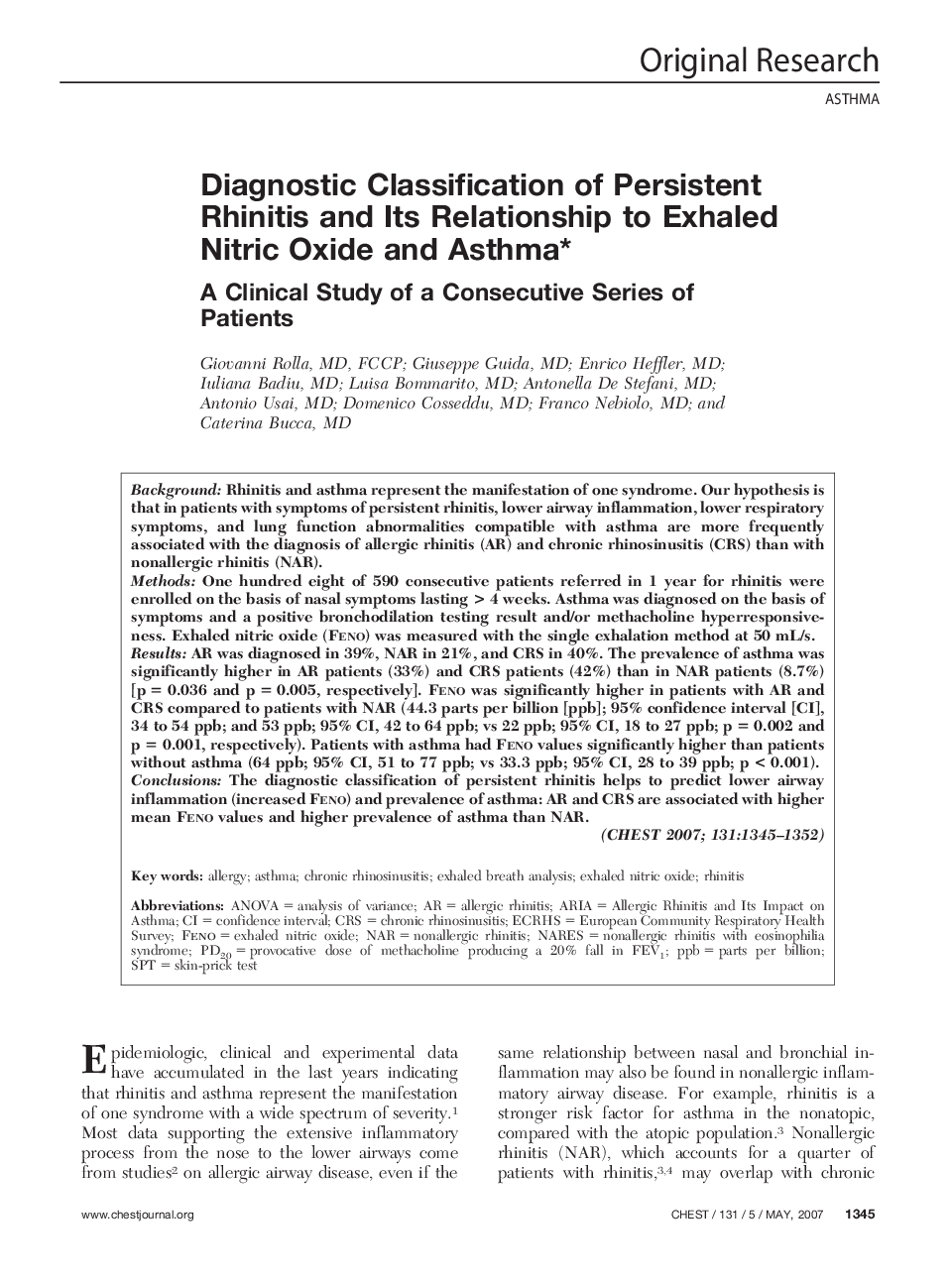| Article ID | Journal | Published Year | Pages | File Type |
|---|---|---|---|---|
| 2904705 | Chest | 2007 | 8 Pages |
BackgroundRhinitis and asthma represent the manifestation of one syndrome. Our hypothesis is that in patients with symptoms of persistent rhinitis, lower airway inflammation, lower respiratory symptoms, and lung function abnormalities compatible with asthma are more frequently associated with the diagnosis of allergic rhinitis (AR) and chronic rhinosinusitis (CRS) than with nonallergic rhinitis (NAR).MethodsOne hundred eight of 590 consecutive patients referred in 1 year for rhinitis were enrolled on the basis of nasal symptoms lasting > 4 weeks. Asthma was diagnosed on the basis of symptoms and a positive bronchodilation testing result and/or methacholine hyperresponsiveness. Exhaled nitric oxide (Feno) was measured with the single exhalation method at 50 mL/s.ResultsAR was diagnosed in 39%, NAR in 21%, and CRS in 40%. The prevalence of asthma was significantly higher in AR patients (33%) and CRS patients (42%) than in NAR patients (8.7%) [p = 0.036 and p = 0.005, respectively]. Feno was significantly higher in patients with AR and CRS compared to patients with NAR (44.3 parts per billion [ppb]; 95% confidence interval [CI], 34 to 54 ppb; and 53 ppb; 95% CI, 42 to 64 ppb; vs 22 ppb; 95% CI, 18 to 27 ppb; p = 0.002 and p = 0.001, respectively). Patients with asthma had Feno values significantly higher than patients without asthma (64 ppb; 95% CI, 51 to 77 ppb; vs 33.3 ppb; 95% CI, 28 to 39 ppb; p < 0.001).ConclusionsThe diagnostic classification of persistent rhinitis helps to predict lower airway inflammation (increased Feno) and prevalence of asthma: AR and CRS are associated with higher mean Feno values and higher prevalence of asthma than NAR.
